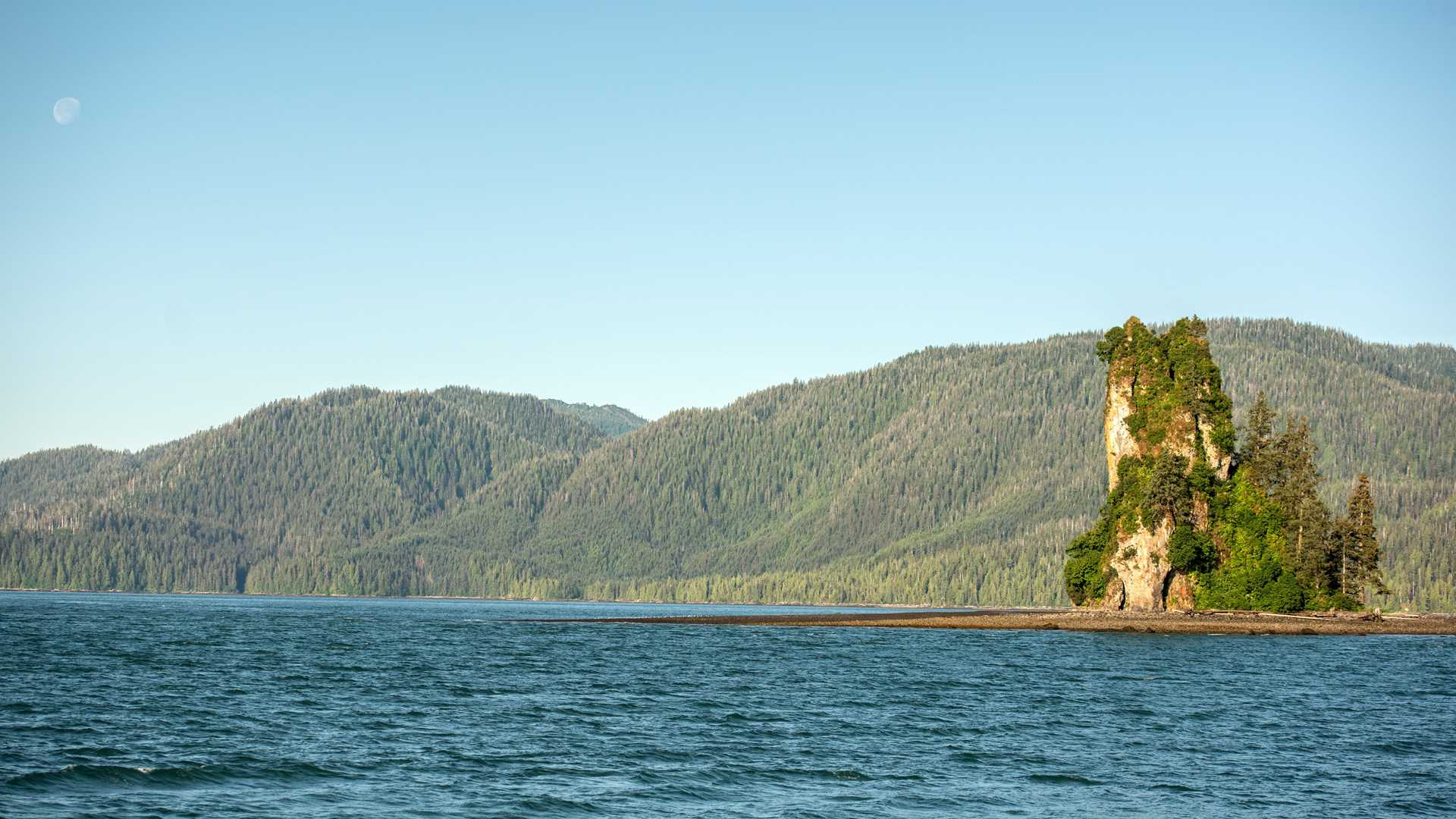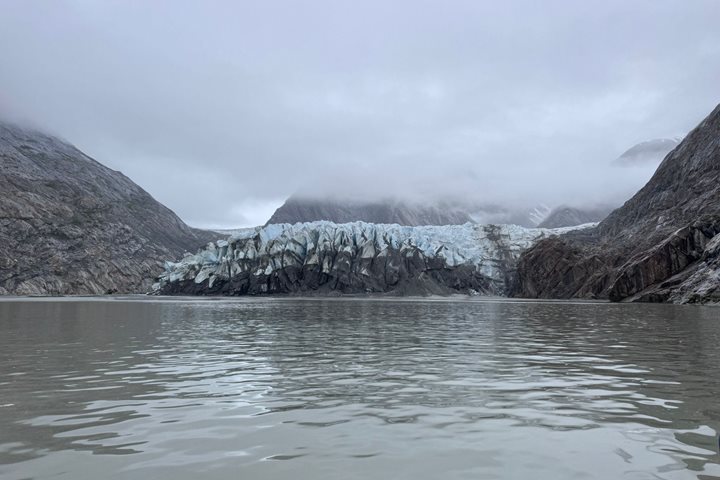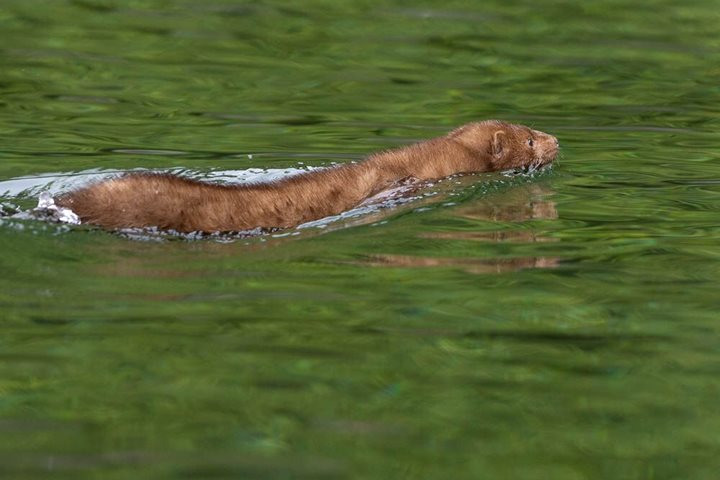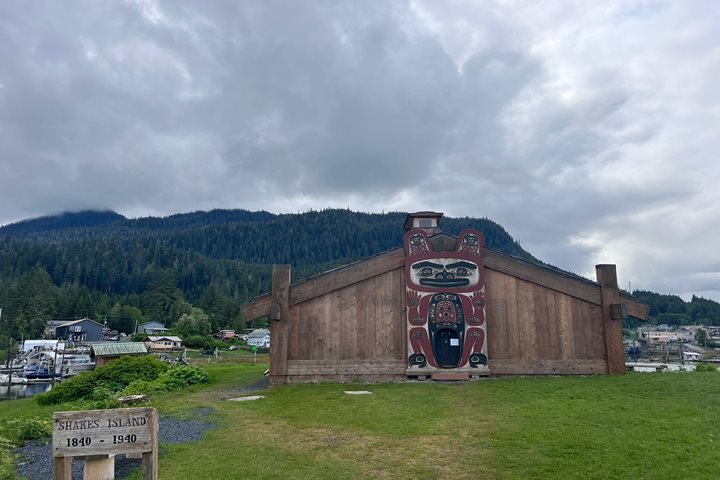Early this morning, National Geographic Sea Lion continued her journey in Behm Canal, which is considered the gateway to Misty Fjords National Monument. Sitting in the center at one end of Behm Canal, New Eddystone Rock is a pillar of basalt rising 237 feet. This volcanic plug is left over from massive volcanic activity that occurred 15,000 to 13,800 years ago. It was named by Captain Vancouver, who thought it resembled Eddystone Lighthouse off Plymouth, England. Our mate Candace did a slow bell around this beautiful formation on a gorgeous sunny and warm morning.
Once breakfast was finished, we were all called into the forward lounge for introductions to staff, a safety briefing, and more details about our day. As soon as the information was presented, we headed towards the fantail of the ship to prepare Zodiacs for cruising. Guests made their way to the aft deck, waiting to be called down for our morning Zodiac excursions inside Misty Fjords.
Misty Fjords was designated as a national monument and wilderness territory by President Jimmy Carter in 1978. It is the southernmost of Alaska’s 18 national monuments. Misty Fjords is 3,570 square miles or 2.2 million acres. A wilderness classification designates land that is preserved for eternity for its beauty and the diversity of its environment. Misty Fjords encompasses ice fields, numerous glaciers, mountains, and three major rivers. The name “Misty” was given to this wilderness area for the amount and type of misting rain, which is the usual weather seen at levels exceeding half an inch a day! Our day here was not going to be misty, though! We were in very calm seas with one of the lowest tides many of the staff had ever seen. We were coming off a super full moon that rose on the morning of July 3, 2023, and we were still seeing and feeling the effects of that full moon.
Four Zodiacs were piloted in two rounds, each taking an hour and a half to cruise in and around the extraordinary beauty of this unspoiled piece of wilderness. The diversity of trees was amazing. Western red cedars, yellow cedars, western hemlocks, Sitka spruces, and Sitka alders all intermixed with each other, which is a true sign of an old growth forest. The birdsong was also diverse and lovely to hear. Rufus hummingbirds, Pacific wrens, belted kingfishers, mew gulls, glaucous gulls, common mergansers, varied thrushes, marbled murrelets, and, of course, many bald eagles were some of the highlights.
Rudyard Bay is also the home of many harbor seals. With the extreme low tide, a group of seals was hanging out at the entrance to one of the salmon rivers. They were very relaxed. Due to the shallow water, we could watch as these marine mammals slowly cruised, occasionally coming to the surface to breathe before returning to the shallows to do what seals do in the back of a bay at low tide. Babies, moms, and single animals all enjoyed the warm air, clear waters, and the safety of this remote piece of wilderness.
Just before lunch, all Zodiacs began a slow return to the ship. We had spent our entire morning in Rudyard Bay, deep in the wilderness of Misty Fjord. Back on the ship, lunch was soon called, and we all adjourned for another lovely meal prepared by Chef Eddie King. After lunch, many returned to the upper decks as the ship cruised back into Behm Canal and began an afternoon cruise to look for wildlife and head towards tomorrow’s destination, Wrangell in Southeast Alaska. Our first day was filled with warm weather, a closer look at a coastal temperate rainforest, and just a touch of some of the wildlife that can be found in this extraordinary place where the forests come down along the mountain ranges to touch the sea and grace a world filled with beauty.







